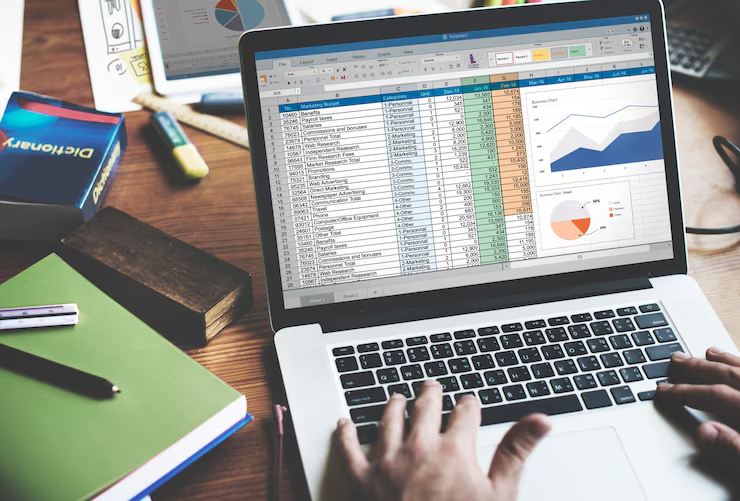The climate crisis is no longer a distant threat, it’s unfolding right before our eyes. From rising sea levels to unpredictable weather patterns, global warming is disrupting lives, economies, and ecosystems. Amidst this chaos, one tool is proving to be indispensable: data analytics.
At Spread Safe, we explore how Data Analytics in Climate Change Research is helping scientists, governments, and industries turn complex data into actionable insights. By analyzing vast datasets from satellites, weather sensors, and citizen reports, data analytics is transforming how we understand, predict, and fight climate change.
Harnessing Big Data for Climate Modeling
Big data analytics plays a foundational role in building climate models. These models use historical and real-time data like carbon emissions, ocean temperatures, and atmospheric pressure to simulate future climate conditions under various scenarios.
For example, the Intergovernmental Panel on Climate Change (IPCC) relies on data analytics to create Representative Concentration Pathways (RCPs), which project the impact of different CO₂ emission levels on global temperatures. The precision of these forecasts directly influences international climate agreements and national policies.
Satellite Data: Watching the Earth in Real-Time
Satellites orbiting Earth collect terabytes of data every day, tracking variables such as:
- Ice sheet thickness
- Ocean currents
- Cloud formation
- Deforestation
- Urban heat islands
With AI-driven analytics, researchers can now process and interpret these complex data streams in real-time. This allows for immediate detection of anomalies like illegal logging in the Amazon or rapid glacier melt in Greenland giving policymakers precious time to respond.
Climate Risk Assessment for Governments & Industries
One of the most practical applications of data analytics is in climate risk management. Governments use it to evaluate the vulnerability of infrastructure, agriculture, and water resources to climate-related hazards.
Industries like insurance and real estate rely on climate analytics to assess flood risks, wildfire zones, or sea-level rise before approving policies or development projects. In agriculture, predictive analytics helps farmers decide what crops to plant based on upcoming seasonal anomalies.
Key Example:
Japan uses AI-enhanced analytics to predict typhoons and warn vulnerable areas up to 10 days in advance, reducing property damage and saving lives.
Citizen Science and Open Climate Data
Thanks to smartphones, sensors, and open platforms, ordinary citizens are now data contributors. Apps like iNaturalist and community weather stations supply microclimate data, which analysts integrate with official datasets.
This hyperlocal data reveals patterns that satellite data may miss like urban microclimates, flash floods, or local drought conditions offering a bottom-up view of climate impacts and solutions.
Open Data Portals:
- NASA Earthdata
- Copernicus Climate Data Store
- NOAA National Centers for Environmental Information (NCEI)
AI and Machine Learning in Environmental Monitoring
AI and machine learning (ML) bring unmatched efficiency to climate data processing. ML models can be trained to detect subtle shifts in climate variables and forecast long-term trends with greater accuracy than traditional models.
AI Use Cases in Climate Monitoring:
- Detecting coral bleaching via satellite imagery
- Forecasting drought based on soil moisture and rainfall patterns
- Modeling wildfire spread using historical wind, fuel, and terrain data
- Enhancing urban resilience through smart city sensors
Machine learning helps reduce false positives and accelerate the response time in environmental emergencies, ensuring that insights are not just timely but life-saving.
FAQs
Q1. What is the role of data analytics in climate change research?
A: It helps convert massive climate-related datasets into meaningful trends, models, and predictions that guide science, policy, and preparedness.
Q2. How do satellites contribute to climate research?
A: They provide real-time, global observations of weather systems, land use, ocean patterns, and emissions that feed into data analytics platforms.
Q3. Can data analytics help prevent climate disasters?
A: Yes. Predictive analytics can warn of floods, droughts, or heatwaves days or weeks in advance, enabling better resource management and disaster response.
Q4. What sectors rely on climate data analytics the most?
A: Government agencies, agriculture, finance, insurance, energy, and real estate all rely on it to minimize risk, ensure compliance, and plan for the future.
Q5. Is machine learning reliable in climate science?
A: When combined with verified data and expert oversight, ML significantly enhances accuracy, speeds up analysis, and uncovers hidden correlations.
Conclusion
Data analytics is the nerve center of modern climate science. It transforms overwhelming amounts of raw data into clear, actionable insights. Whether it’s preventing disasters, shaping policy, or optimizing agricultural yields, analytics bridges the gap between climate knowledge and climate action.
At Spread Safe, we believe that investing in robust, ethical, and accessible data systems is essential for a sustainable future. As technology and climate urgency converge, embracing data analytics is not a luxury it’s a necessity.




